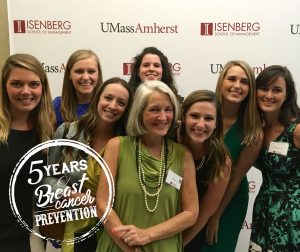Our Roots and the Organic Lifestyle
 The roots of Protect Our Breasts grew in solid ground. Living an organic lifestyle, I had already dedicated my life to sharing about chemicals in our environment and bodies when I wrote The Ecofoods Guide: What’s Good for the Earth is Good for you in 2002. Eight years later, exhausted by several surgeries and radiation from breast cancer and faced with evidence of the role of environmental toxins from the President’s Cancer Panel, it was clear efforts had to expand to stop to the disease that has affected 2.8 million American women, 85% of which have no family history.
The roots of Protect Our Breasts grew in solid ground. Living an organic lifestyle, I had already dedicated my life to sharing about chemicals in our environment and bodies when I wrote The Ecofoods Guide: What’s Good for the Earth is Good for you in 2002. Eight years later, exhausted by several surgeries and radiation from breast cancer and faced with evidence of the role of environmental toxins from the President’s Cancer Panel, it was clear efforts had to expand to stop to the disease that has affected 2.8 million American women, 85% of which have no family history.
With the help of a small team of Isenberg students and our science advisors, research uncovered that women up through their first pregnancies (IOM) were most vulnerable to many of the 85,000 largely unregulated chemicals in the marketplace — exposures that could set them up for a breast cancer diagnosis later in life. Avoiding toxins in everyday products was clearly an important means of prevention.
Today, nearly 12,000 of you follow us on social media and there are new chapters emerging on college campuses for peer-to-peer sharing. Many of our posts highlight #organic because so many of the carcinogens and endocrine disruptors are synthetic pesticides not allowed in organic production. We encourage choosing organic as a first step to safer alternatives. Packaging and personal care products often have chemicals we bring to your attention as the science is released such as BPA-BPS-BPF in cans/caps or paraben and phthalates in shampoos and cleaning supplies.
Whether it is #formaldehyde in nail polish or #rBGH (hormones) in milk, our goal is to translate the science into things to avoid or simple suggestions of safer #organic alternatives to protect your breasts today and prevent a diagnosis tomorrow. #fiveyearsofbreastcancerprevention

